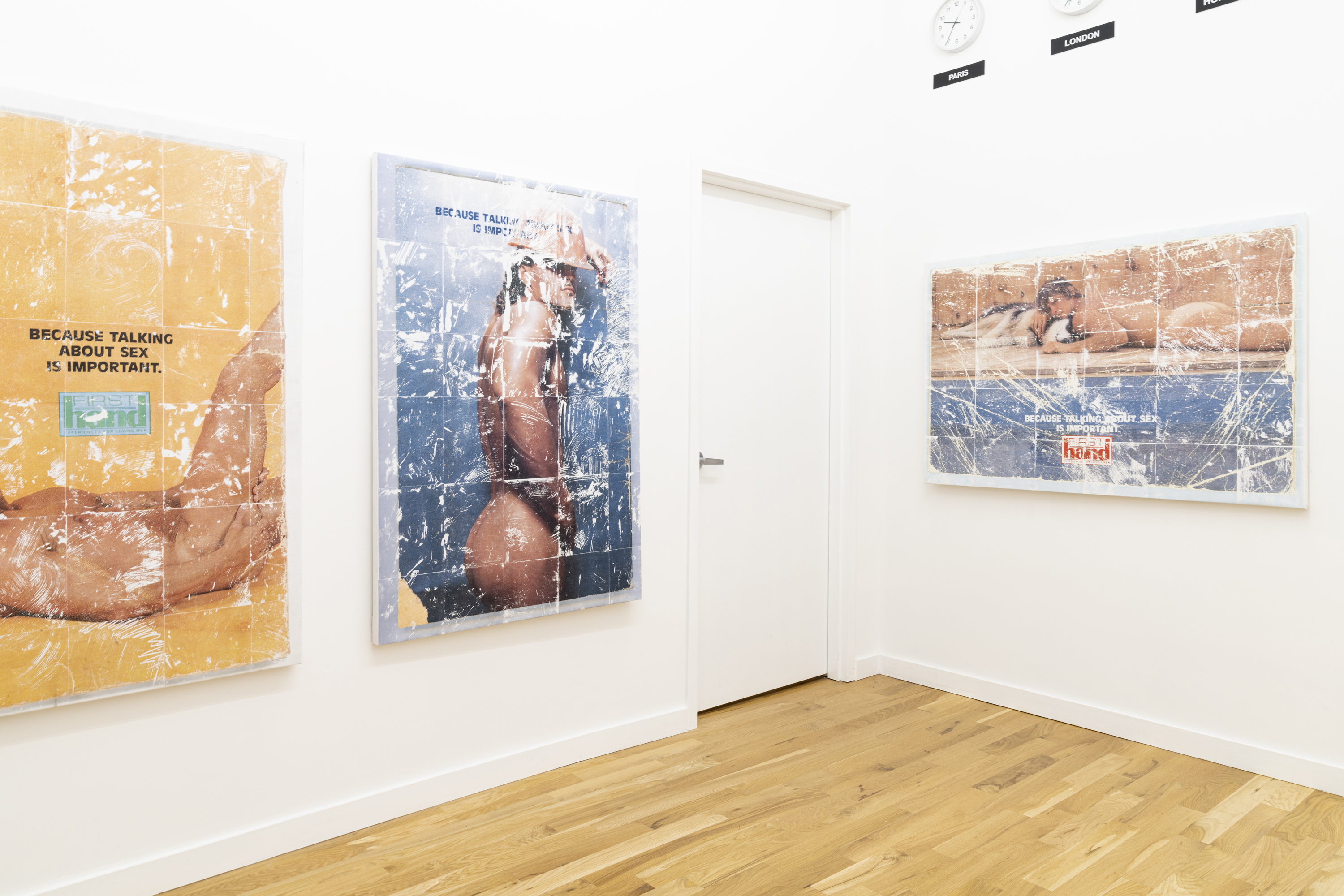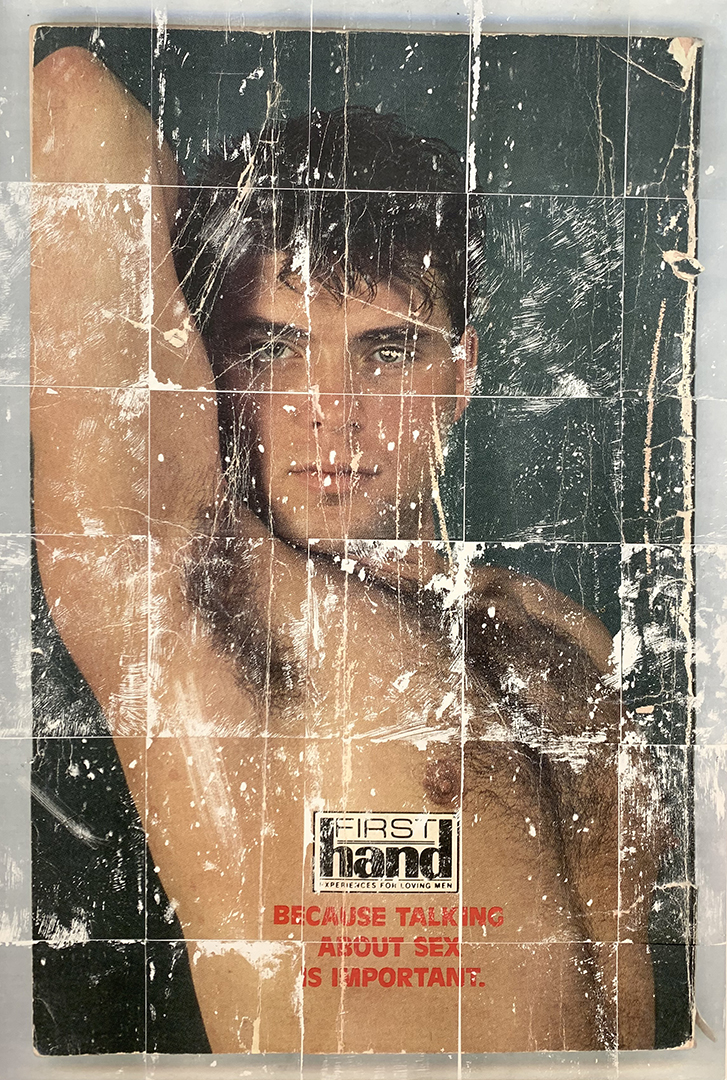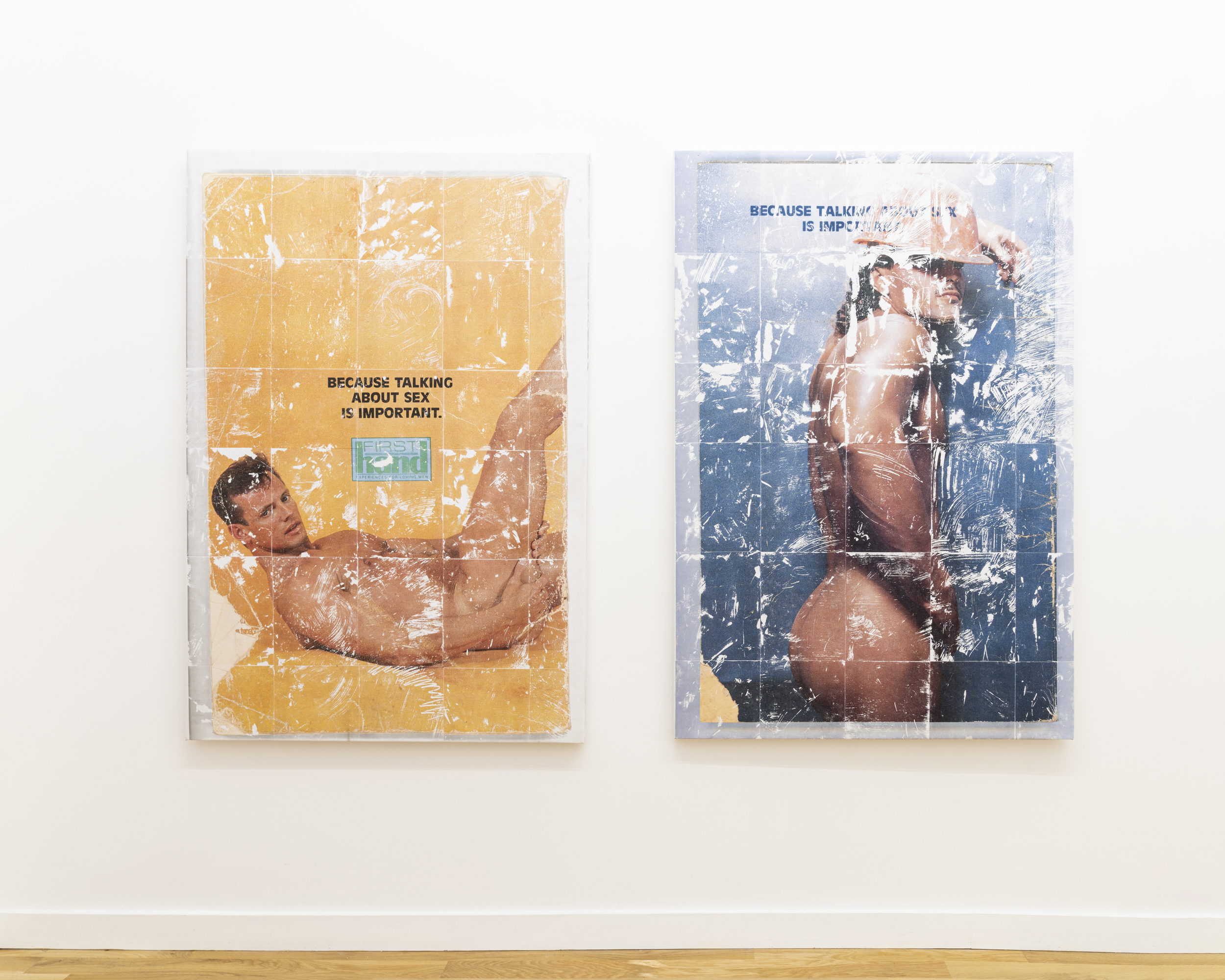From the artist:
This body of work is based on a series of public service announcements that were printed on the backs of gay pulp erotica magazines (First Hand Experiences For Loving Men) during the late 1980’s to the late 90’s. The announcements were intended to encourage open and positive dialogue about HIV and AIDS, as well as defining acceptance for queerness in general. The art works themselves are produced from scanning the highly distressed surfaces of the original magazines. They are enlarged to heighten the physical affectation of these image objects, their production value, materiality, economy of image, but also to humanize the subjects featured on them.
During quarantine, I reflected on my time when I came to America: I was living in Massachusetts, an immigrant queer teenager in the wake of the AIDS pandemic, and my experiences with violence and fear, but also paradoxically sexual awakening. The AIDS pandemic was a formative narrative and aesthetic for me, given that I experienced it at the peak of my adolescence. At that time, these magazines were pretty much the only form of printed queerness I had ever encountered. I found them at the, now sadly closed, Calamus Book Store ,a shop two blocks away from South Station in Boston, where I would commute to work in summers, to work on the Spirit of Boston, a harbor cruise restaurant.I was too afraid to ever actually own one at the time because my sexuality and immigrant status became the subject of other people’s projected xenophobia and targeted aggression.
More than a decade later, I would encounter these same magazines with my partner Andrew at the Gerber/Hart Library, an archive for queer history and artifacts in Chicago. It was at the Library’s annual book sale these magazines re-entered my life. And now, after also spending 5 years working as gogo-boy at the Lucky Horseshoe Lounge, these objects, their history and their message, have come into my art. I was struck by how much the gravity and longitude of pandemic-related aesthetics has persisted and affected my circumstances, my income, my emotional capacity, and my life as an American, and as a person. Be gently while you are here.
Biggest love, —Leonardo Kaplan
From Pickleman:
To my mind, there are two ways to experience these works: as objects in real life, and as images amidst our various devices. It’s the physical-ness of these works as hand-made objects, the way the toner ink and gesso appear, that greatly appeal to me. These artworks exist in a space ambiguously situated between print and painting. The white ground of the laboriously sanded gessoed surface appear as painterly traces of the imperfect image transfer process: the white marks becoming both residue of toner ink that doesn’t adhere and remembrance of the grid that organizes the tiled sheets from which the images are composed. The white marks are most certainly painterly—they are painted gesso; yet they are uncontrollable in their final appearance. The force needed to apply the image to the gessoed surface is intrinsically frustrated by drying time, humidity, surface infidelity, and the brashness of strength necessary in the transfer, resulting in an abstract calculus as seen in the white fodder of marks that scatter about the hunky portraits. To my mind, these works are paintings with a capital P; I’m not certain Leo agrees, but artists are often wrong.



























